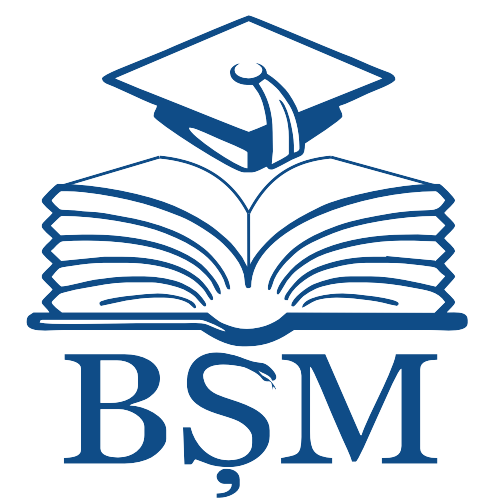| DC Field | Value | Language |
|---|
| dc.contributor.author | Casian, Andreea | |
| dc.contributor.author | Sardari, Veronica | |
| dc.contributor.author | Stratulat, Silvia | |
| dc.contributor.author | Munteanu, Roman | |
| dc.contributor.author | Cojoc, Daniela | |
| dc.contributor.author | Tagadiuc, Olga | |
| dc.date.accessioned | 2025-04-23T09:34:51Z | |
| dc.date.available | 2025-04-23T09:34:51Z | |
| dc.date.issued | 2025 | |
| dc.identifier.citation | CASIAN, Andreea; Veronica SARDARI; Silvia STRATULAT; Roman MUNTEANU; Daniela COJOC and Olga TAGADIUC. Telomere shortening as a mechanism for the induction of neurodegenetative diseases. In: Cells and tissues transplantation. Actualities and perspectives. The 3rd edition : The Materials of the National Scientific Conference with international participation dedicated to the 80th anniversary of the founding of Nicolae Testemitanu State University of Medicine and Pharmacy. Chisinau, March 21-22, 2025: [abstracts]. Chişinău: CEP Medicina, 2025, p. 74. ISBN 978-9975-82-413-2. | en_US |
| dc.identifier.isbn | 978-9975-82-413-2 | |
| dc.identifier.uri | https://repository.usmf.md/handle/20.500.12710/30414 | |
| dc.description.abstract | Background. Telomeres are considered the "cellular biological clock" because their length could
determine the possible number of cell divisions. Telomerase plays a role in maintaining telomere
length. Telomerase ensures de novo addition of nitrogenous base sequences such as TTAGGG at the
3' end, protecting the chromosome end from double-strand breaks and preventing the DNA damage
response (DDR).
Objective of the study. Identifying the mechanisms by which the progressive shortening of telomeres
in nerve cells activates processes leading to neuronal senescence, with the aim of improving diagnosis
and developing effective treatment methods.
Materials and Methods. To achieve the proposed objective, a literature review was conducted using
10 bibliographic sources from electronic libraries such as PubMed, MedScape, Hindawi, and
ScienceDirect.
Results. Telomerase is active in young neural cells or neural precursor cells, but as they differentiate
into mature neurons, its activity progressively decreases, affecting neuronal differentiation and
stopping neurogenesis. In the absence of telomerase, telomere shortening can reach critical lengths,
triggering a DDR-type response. This process induces the activation of ataxia-telangiectasia mutated
kinase and other signaling proteins such as p53 and p21. The p53 protein plays a role in halting the
cell cycle by activating p21, which inhibits cyclin-dependent kinase 2 and blocks the phosphorylation
of the retinoblastoma protein (Rb). Hypophosphorylated Rb blocks E2 factor, a transcription factor,
preventing the expression of genes necessary for cell division and causing cell cycle arrest in the G1
phase, leading to replicative senescence. Senescent cells secrete a senescence-associated secretory
phenotype, which contributes to chronic inflammation and the spread of senescence in neighboring
tissues. Chronic inflammation accelerates the accumulation of toxic proteins, such as beta-amyloid in
Alzheimer’s or alpha-synuclein in Parkinson’s, promoting neuronal death and disease progression.
Conclusion: Telomere shortening in nerve cells induces senescence and chronic inflammation,
accelerating neurodegeneration in diseases such as Alzheimer's and Parkinson's. Future therapies could
aim at controlled activation of telomerase, the use of senolytic cells to eliminate senescent cells, and
blocking senescence-associated secretory phenotype to reduce inflammation. These approaches could
help slow down the neurodegenerative process and contribute to the development of more effective
treatments. | en_US |
| dc.language.iso | en | en_US |
| dc.publisher | CEP Medicina | en_US |
| dc.relation.ispartof | Cells and tissues transplantation. Actualities and perspectives. The 3-rd edition. Chisinau, March 21-22, 2025 | en_US |
| dc.subject | telomeres | en_US |
| dc.subject | telomerase | en_US |
| dc.subject | neurodegeneration | en_US |
| dc.subject | senescence | en_US |
| dc.title | Telomere shortening as a mechanism for the induction of neurodegenetative diseases | en_US |
| dc.type | Other | en_US |
| Appears in Collections: | The Materials of the National Scientific Conference with International Participation „Cells and tissues transplantation. Actualities and perspectives. The 3rd edition” dedicated to the 80th anniversary of the founding of Nicolae Testemitanu State University of Medicine and Pharmacy. Chisinau, March 21-22, 2025: [Abstracts]
|


